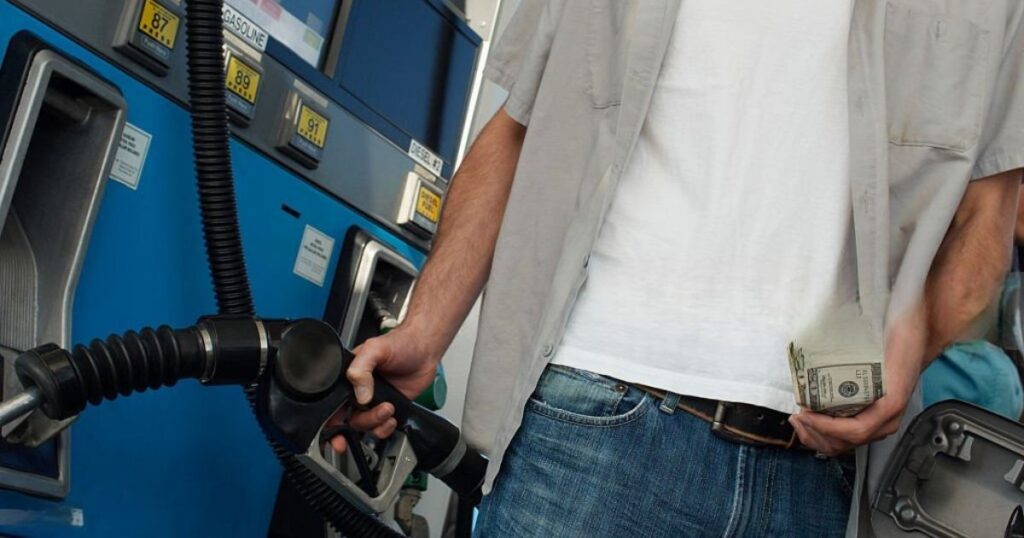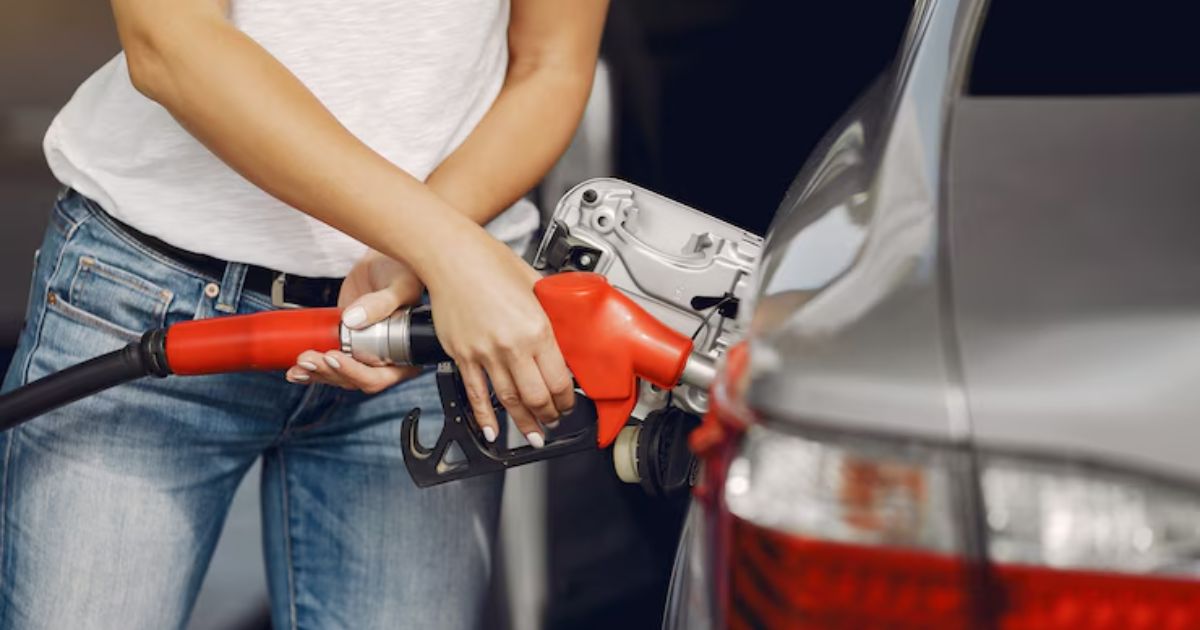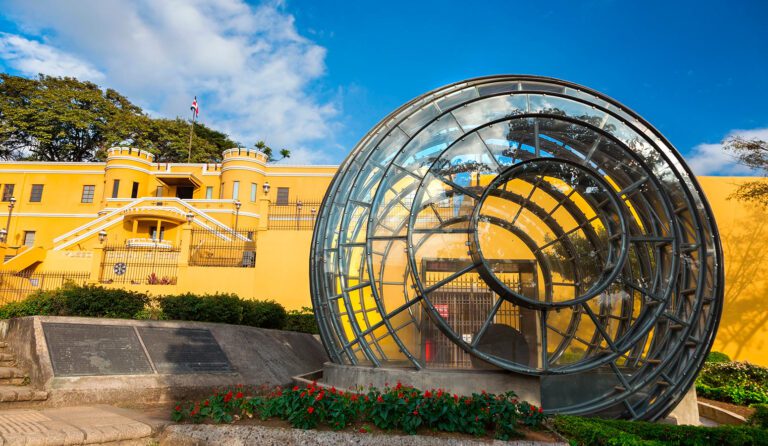Gas prices are a big factor when you’re hitting the road in Costa Rica. Whether you’re a local driver commuting daily or a tourist exploring the country’s stunning landscapes, knowing how much is gas in Costa Rica can help you manage your travel budget effectively. Prices for gas in Costa Rica are notably higher than in many other places, primarily due to import costs and taxes. This means that understanding the pricing landscape here can make a real difference in how you plan your travel expenses.
So, why exactly is gas more expensive in Costa Rica? For starters, Costa Rica doesn’t produce its own oil. The country heavily relies on imports, which adds a significant cost. Then, there are various taxes that further inflate the price. As a result, both locals and tourists feel the pinch at the pump. However, there’s a bright side. Knowing these details can help you better anticipate your costs and save some money in the long run. For visitors, it means having a clearer picture of what to budget for fuel when renting a car.
In this blog, you’ll get a detailed breakdown of how gas pricing works in Costa Rica. We’ll dive into general cost expectations and explore helpful strategies to make your journey more affordable. Armed with this knowledge, both drivers in Costa Rica and tourists can plan smarter trips and avoid budget surprises. So, if you’re curious about what impacts these gas prices and how you can effectively plan your travels without breaking the bank, keep reading.

Understanding Gas Pricing in Costa Rica
In Costa Rica, the government regulates gas prices, specifically the Regulatory Authority for Public Services (ARESEP). This means that the government has a say in how much gas costs. By controlling these prices, they try to protect consumers from sudden spikes. It adds stability. But it also means that gas prices may not drop quickly even when global oil prices fall.
Prices are Set Nationally
In Costa Rica, gas prices are the same throughout the country. This uniform pricing is mandated by ARESEP, which sets a national price for gas. Consequently, there is no price competition between gas stations. Everyone pays the same amount no matter where they are in Costa Rica. This uniformity simplifies things for consumers, but it can confuse those used to varying prices in different regions.
Prices Reviewed and Adjusted Regularly
The government doesn’t just set prices and forget about them. ARESEP reviews and adjusts fuel prices regularly—typically every second Friday of the month. This process helps keep prices aligned with international trends and local economic changes. But this can also mean frequent changes at the pump. One month, gas might be more expensive than the next.
Contributing Factors
Now, let’s talk about what influences these gas prices. Several factors come into play.
- Global Oil Prices
Global oil prices are an obvious influencer. When they rise, gas prices usually follow. Costa Rica, like most countries, depends on imported oil. So, global market trends have a direct impact on local prices.
- Transportation
Getting oil to Costa Rica involves transportation costs. These costs can sway gas prices. Moving oil across the ocean and by land isn’t cheap. So, these expenses affect the final price consumers pay at the pump. Even small changes in transportation costs can ripple through to the final price.
- Taxes
Taxes are another crucial factor. The government taxes fuel heavily. These taxes are necessary to fund public projects and infrastructure. But they do add to the overall price. It might feel like an extra burden, but it’s part of maintaining the country’s economy and services.
- Currency Exchange
Don’t overlook currency exchange rates. They play a significant role too. Since Costa Rica buys oil in international markets, they deal in foreign currencies. If the local currency weakens against the dollar, importing oil becomes more expensive. This results in higher prices at the pump.
In summary, many elements shape gas prices in Costa Rica. The combination of regulation, national pricing, and scheduled reviews keeps the system in check. But global oil prices, transportation, taxes, and currency exchange rates make the picture more complex. Now, understanding gas pricing in Costa Rica doesn’t seem too tough, right?

What to Expect: Typical Gas Prices in Costa Rica
Gas prices in Costa Rica can be a bit different from what you might be used to back home, especially if you’re coming from the US or Europe. Typically, you can expect to pay around 730 to 800 colones per liter. To give you a better idea, that’s roughly $1.35 to $1.50 USD per liter, depending on exchange rates. Yes, it’s a bit higher than some places, but that’s the norm there.
Why Are Costa Rica’s Gas Prices Higher?
So, why are gas prices in Costa Rica higher? Several factors come into play. One reason is that fuel has to be imported because Costa Rica doesn’t produce its own oil. This means taxes and logistics can make prices higher. Plus, the government, through ARESEP (the Regulatory Authority for Public Services), sets the prices. This regulation ensures price stability, but it also means you won’t see big discounts or competition between gas stations.
Do Gas Prices Vary By Location?
Here’s a common misconception: Gas prices are the same nationwide, including remote areas. There is no legal price variation based on location, as all stations must follow the regulated price set by ARESEP.
However, sometimes remote stations may charge extra unofficially for services or due to rounding issues. But technically, the posted fuel price should be the same everywhere.
Additionally, keep in mind that these prices are subject to change based on global oil market fluctuations. But, despite these changes, Costa Rica’s gas prices usually stay within a certain range because of the government regulation mentioned earlier.
However, don’t let the prices deter you if you’re planning a drive through Costa Rica. It’s a great place to explore by car, offering stunning coastlines and majestic mountains. Plus, though the gas might cost a bit more, public transportation and food can be quite affordable, helping balance out your travel budget.
If you’re planning a trip or a long-term stay, it’s good to keep these gas prices in mind while budgeting. Knowing what to expect can help you plan your adventures more effectively.

How Buying Gas Works in Costa Rica
Buying gas in Costa Rica is straightforward but has its unique quirks. One thing you might notice is that there’s no self-service at gas stations. This means you won’t be pumping your own gas. An attendant will do it for you. It’s pretty convenient—you just tell them how much gas you want and they’ll take care of it. Tipping is appreciated, especially if they provide additional services like checking oil or cleaning the windshield, though it’s not required.
Now, let’s talk about the types of fuel you’ll find in Costa Rica. Most gas stations offer Regular, Super, and Diesel. Regular gas is similar to what you might call unleaded elsewhere. Super is like premium fuel. Diesel is available too for those driving diesel engines. If you’re renting a car, check what type of fuel it uses ahead of time. Renting a car is a great way to explore Costa Rica.
Station Availability
When you drive around, you’ll see that gas stations are usually placed at convenient locations. They are mostly along main roads and highways. However, in more remote areas, there might be fewer stations. It’s smart to fill up your tank when you have the chance. The last thing you want is to run low on gas in the middle of nowhere. Waze and Google Maps are widely used in Costa Rica and can help locate the nearest station.
Payment Tips
Another tip is to have some cash on hand. While most gas stations accept credit cards, cash is always a good backup. In some places, credit card machines may be down. Having cash is just easier sometimes. Also, some rural stations may only accept cash or charge extra for card transactions.
Extra Services
It’s also worth mentioning that attendants might offer to check your oil or clean your windshield. This is often part of their service. You can say yes or no, depending on what you need. It’s these small gestures that make the experience more personable. Basic car maintenance help from attendants is common and usually included in the service.
So, to sum up, buying gas in Costa Rica means interacting with an attendant, knowing your fuel types, and preparing for government-regulated prices. Gas stations are easy to find but can be sparse in rural areas. Keep some cash handy and enjoy the attentive service you’ll receive. With these points in mind, you’ll have a smooth experience fueling up your rental car.
How to Check Up-to-Date Gas Prices in Costa Rica
Checking up-to-date gas prices in Costa Rica as a traveler is important if you’re planning a road trip. It helps you budget better. First off, one of the simplest ways is to check the official ARESEP website (the Regulatory Authority for Public Services). They publish biweekly fuel price updates for all fuel types across the country. Their site or social media pages often show the latest official prices.
Another reliable way is to check local Costa Rican news websites. They often report changes in gas prices since it’s a topic of interest for many people. Plus, these websites can give insights into why prices might be fluctuating.
Social media can help too. Join travel groups or forums related to Costa Rica. Fellow travelers often share tips and current prices. It’s community-driven and handy. You get real experiences from people like you.
Furthermore, gas stations in Costa Rica display prices outside, just like in many other places. Because prices are regulated and uniform nationwide, what you see at one station reflects the current national price. So, keep an eye out as you drive—this can give you quick confirmation of the latest rates. Just note that prices are in colones per liter, not gallons.
Lastly, talking with locals is beneficial. Ask them where to find the best prices. While prices won’t differ much, locals may recommend stations with shorter lines or better service. It also adds a personal touch to your travel experience.
So, using the ARESEP website, checking news sites, leveraging social media, watching for gas station signs, and chatting with locals are all good ways to stay informed about gas prices in Costa Rica.

Tips for Saving Money on Gas in Costa Rica
Saving money on gas in Costa Rica can be a real challenge due to nationally regulated fuel prices and global oil fluctuations. But don’t worry—there are simple steps you can take to make a difference. These tips will help you cut costs and make fuel go further on your Costa Rican adventures.
Keep Your Vehicle Well-Maintained
Regular car maintenance is key. When your car is in good shape, it runs more efficiently and uses less gas. Make sure your tires are properly inflated, as low tire pressure can increase fuel consumption. Also, regularly change the oil and air filters to keep the engine running smoothly.
Plan Your Trips Wisely
Plan your errands and trips ahead of time. Combine errands into a single journey rather than several separate trips. This helps you save gas by reducing the overall mileage you drive. Use GPS or map apps to find the most direct routes and avoid heavy traffic when you can.
Drive Smoothly
Aggressive driving can burn through fuel quickly. Try to accelerate smoothly and brake gently. This simple technique can boost your gas mileage. Always maintain a steady speed on highways and use cruise control when possible for better fuel efficiency.
Monitor Your Fuel Consumption
Track how much fuel you use and compare it to your driving habits. Keeping an eye on your gas mileage can help you identify areas for improvement. Consider using apps or tools that help track and analyze your fuel efficiency. Over time, these small changes can lead to significant savings.
Avoid Excessive Idling
Avoid letting your car idle for long periods. If you’re stopped for more than a minute, like at a long traffic light or in heavy traffic, it’s often more fuel-efficient to turn off the engine. Although it may seem insignificant, reducing idling can conserve gas.
Reduce Extra Weight
Carrying extra weight can make your car less fuel-efficient. Clear out the trunk and remove roof racks when they’re not in use. Every little bit helps. This ensures your vehicle doesn’t have to work harder than necessary, saving you money in the long run.
By following these practical tips, you can decrease your gas expenses and make the most out of your travels in Costa Rica. Every little adjustment helps, and together they add up to meaningful savings.
Should You Rent a Car in Costa Rica?
Renting a car in Costa Rica gives you the freedom to explore this beautiful country at your own pace. You’re not bound by bus schedules or tour group timelines. Want to spend a little extra time at that stunning waterfall? No problem. You call the shots. This kind of flexibility is priceless for creating your own adventure.
Access to Hidden Gems
With a rented car, you can access remote areas and hidden gems that are often missed by public transportation. Costa Rica has a lot to offer beyond the typical tourist spots. Those secret beaches and quiet villages are easier to reach when you have a car. Plus, you’ll enjoy the journey through beautiful landscapes. Just note that some remote areas may require a 4×4 vehicle due to unpaved or poorly maintained roads.
Convenience and Comfort
Let’s admit it: traveling in comfort makes the journey much more enjoyable. Renting a car means you can travel with your luggage without worrying about it getting squashed in a bus. You can also control the car’s temperature and listen to your favorite tunes. Ultimately, you’ll have a better travel experience when you’re comfortable. Plus, you’ll avoid the hassle of frequent transfers or delays common in public transit, especially in rural regions.
Safety and Control
Driving a rental car also gives you more control over your travel environment and safety. You can avoid overly crowded buses or questionable taxi services. Plus, in the case of rain or unexpected weather, being in a car is more convenient. It’s a reassuring feeling to know you have control over where and how you travel. While driving in Costa Rica is generally safe, some areas have poorly marked roads, unexpected potholes, and aggressive drivers—so stay alert and drive defensively.
Cons to Consider
Of course, there are a few downsides to consider. Gas prices in Costa Rica can be a bit high, which can add to your travel budget. Driving in unfamiliar territory might also be stressful for some travelers. You should weigh these factors before making a decision. However, with careful planning, these issues can be managed.
Final Verdict
Overall, the benefits of renting a car in Costa Rica far outweigh the cons. It’s about freedom, comfort, and the ability to explore this beautiful country on your own terms. Yes, gas might be pricey, and insurance can drive up rental costs, but the chance to make unforgettable memories makes it worth every cent. If you value flexibility and want to explore beyond the typical tourist path, a rental car is a great choice.
Frequently Asked Questions
Whether you’re planning a road trip through Costa Rica’s lush landscapes or considering a long-term stay, one practical question always comes up: How much is gas in Costa Rica? Understanding fuel prices in a foreign country is essential for budgeting your travels or managing daily expenses. Explore below:
Is gas cheaper in Costa Rica compared to the U.S.?
Gas prices in Costa Rica can vary, but they are generally higher than in the United States. This is due to a combination of import taxes, transportation costs, and government regulations. While the global oil market influences prices, local factors in Costa Rica also play a significant role. Travelers often notice the difference when comparing prices directly at the pump.
Are gas prices in Costa Rica the same everywhere?
Gas prices in Costa Rica are set by the government and are the same at every station nationwide, with no legal room for variation. While remote stations may be less frequent or harder to access, the price per liter remains fixed no matter where you are.
How often do gas prices change in Costa Rica?
In Costa Rica, gas prices are reviewed and adjusted regularly by the Regulatory Authority of Public Services (ARESEP). The frequency of changes depends on various factors, including global oil prices and currency exchange rates. Typically, these adjustments occur every two weeks (biweekly), helping to stabilize pricing across the country. Such systematic reviews aim to balance international market dynamics with local economic conditions.
Is tipping expected at Costa Rican gas stations?
Tipping is not mandatory at gas stations in Costa Rica, but it is appreciated. Gas station attendants often provide additional services, such as checking tire pressure or cleaning windshields. If you receive these extra services, it’s courteous to leave a small tip as a gesture of appreciation. Keep in mind that the local custom for tipping is generally modest.
Can you pump your own gas in Costa Rica?
In Costa Rica, gas stations typically employ attendants who pump gas for customers. This full-service approach is common and provides convenience to drivers. While you can find self-service stations in other countries, Costa Rica predominantly maintains the tradition of having attendants assist you at the pump. It’s one of the small differences that drivers might notice when refueling in the country.
What’s the best time of day to buy gas in Costa Rica?
There isn’t a specific best time of day to buy gas in Costa Rica since prices remain constant throughout the day. However, to avoid long lines or waits, consider refueling early in the morning or late in the evening. These times are generally quieter at gas stations, offering a quicker and more convenient experience. Planning ahead can save you time during busier traffic periods.
How can I calculate the gas costs for a road trip in Costa Rica?
To calculate gas costs for a road trip in Costa Rica, determine your vehicle’s fuel efficiency in kilometers per liter and calculate the total distance of your trip. Multiply the distance by the current regulated gas price per liter to estimate costs. It’s useful to check the latest prices through local sources or gas station websites beforehand. This helps ensure you have an accurate budget for your journey.
Should I rent a gas or diesel vehicle in Costa Rica?
Choosing between a gas or diesel vehicle rental in Costa Rica depends on your travel plans and fuel preferences. Diesel vehicles often offer better fuel efficiency and can be more economical for long trips. However, gasoline vehicles might be more widely available and familiar to drivers. Consider the nature of your trip and the availability of fuel types in the areas you’ll be visiting.
Final Thoughts
While gas prices in Costa Rica are often higher than in some other countries, renting a car still offers incredible value. It gives you the freedom to explore at your own pace, stop wherever you like, and visit places that aren’t accessible by bus. Public transportation can be less convenient, especially if you’re traveling with kids or trying to visit multiple destinations in one day.
Driving through Costa Rica lets you experience the country like never before—from stunning beaches to lush mountains, all without being tied to a rigid schedule. Just fill up, map out your route, and enjoy the journey. It’s an adventure you won’t want to miss.
If you’re planning to rent a car, check out Budget Costa Rica. We offer reliable rental cars at fair prices, with locations all over the country to make pick-up and drop-off easy. Whether you’re landing in San José or heading straight to the coast, we’re ready to help you hit the road. Book online today and enjoy Costa Rica with the comfort and flexibility you deserve.







